Abstract
OBJECTIVE: To investigate the anthropometric and physical performance characteristics of New Zealand rugby players of different ages and both sexes. METHODS: 356 rugby players (264 male, 92 female) took part in the study during a single season. Playing grade ranged from schoolboys and schoolgirls to senior men and women. Assessment of height, weight, neck circumference, and somatotype was performed before the competitive rugby season. A battery of six physical performance assessments was completed after the anthropometry. Analysis of variance was used to examine differences in these variables between field positions and grades. RESULTS: Significant differences between forwards and backs on anthropometric and physical performance variables were apparent at all grades assessed. In terms of anthropometric characteristics, forwards of a given grade were generally taller, possessed greater body mass, and were more endomorphic and less ectomorphic than backs of the same grade. The backs tended to perform better on physical performance measures than forwards, being more aerobically fit, faster, more agile, and possessing a higher degree of muscular endurance. Differences in anthropometry and physical performance attributes were also apparent between players from the various grades. The players at higher levels were generally larger, and performed better on tests of physical performance than the players at lower levels. These differences were found in both sexes. CONCLUSIONS: The greater body mass of the forwards allows them to obtain greater momentum than the backs when sprinting. The ability to obtain greater momentum is important in the body contact phases of the game. Forwards may compromise their aerobic fitness and speed to some extent in order to maintain a high body mass. The anthropometric and physical performance characteristics of players appear to reflect the demands placed on them by the sport.
Full text
PDF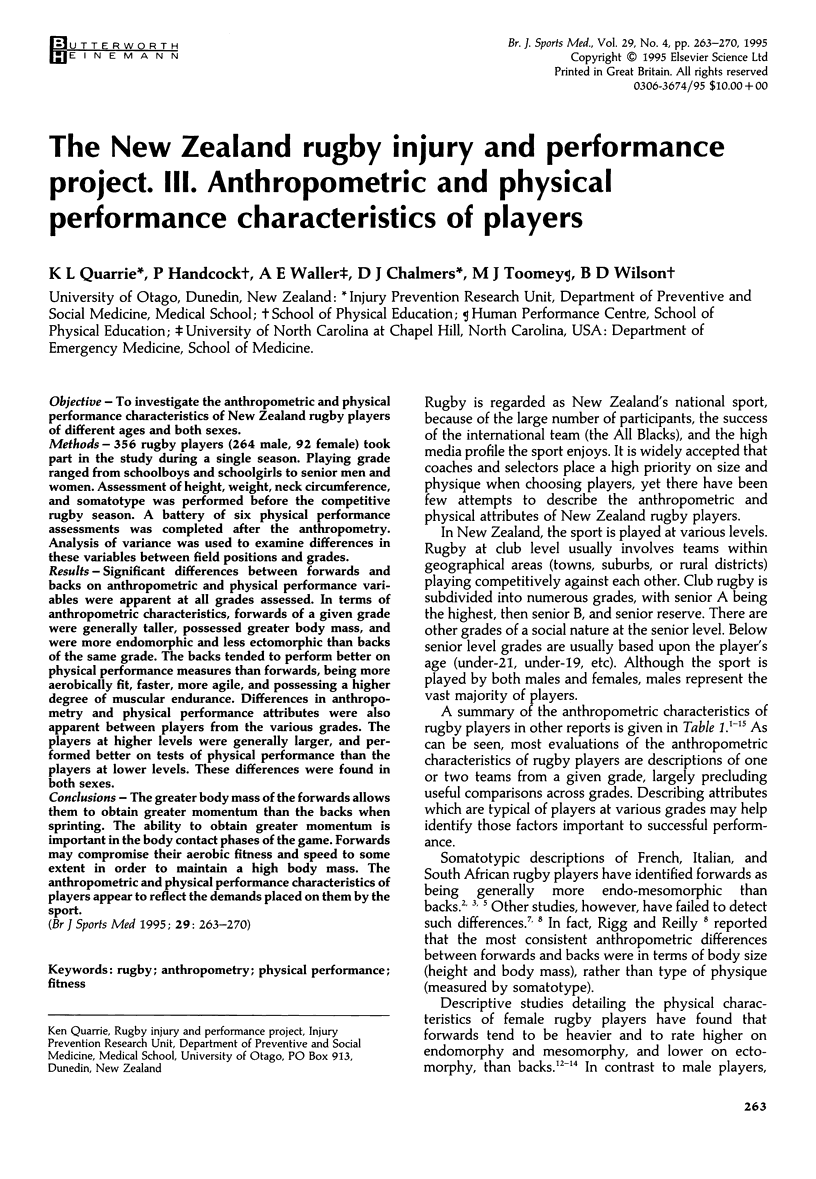

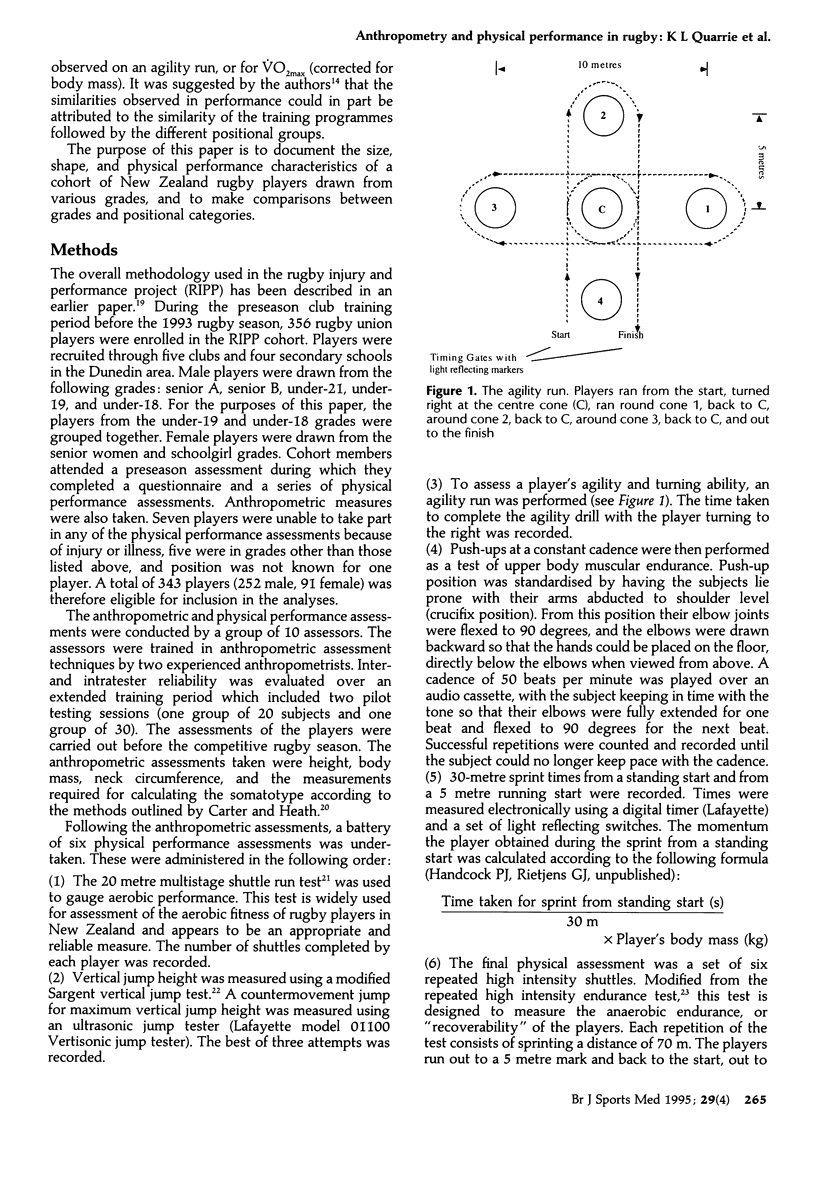
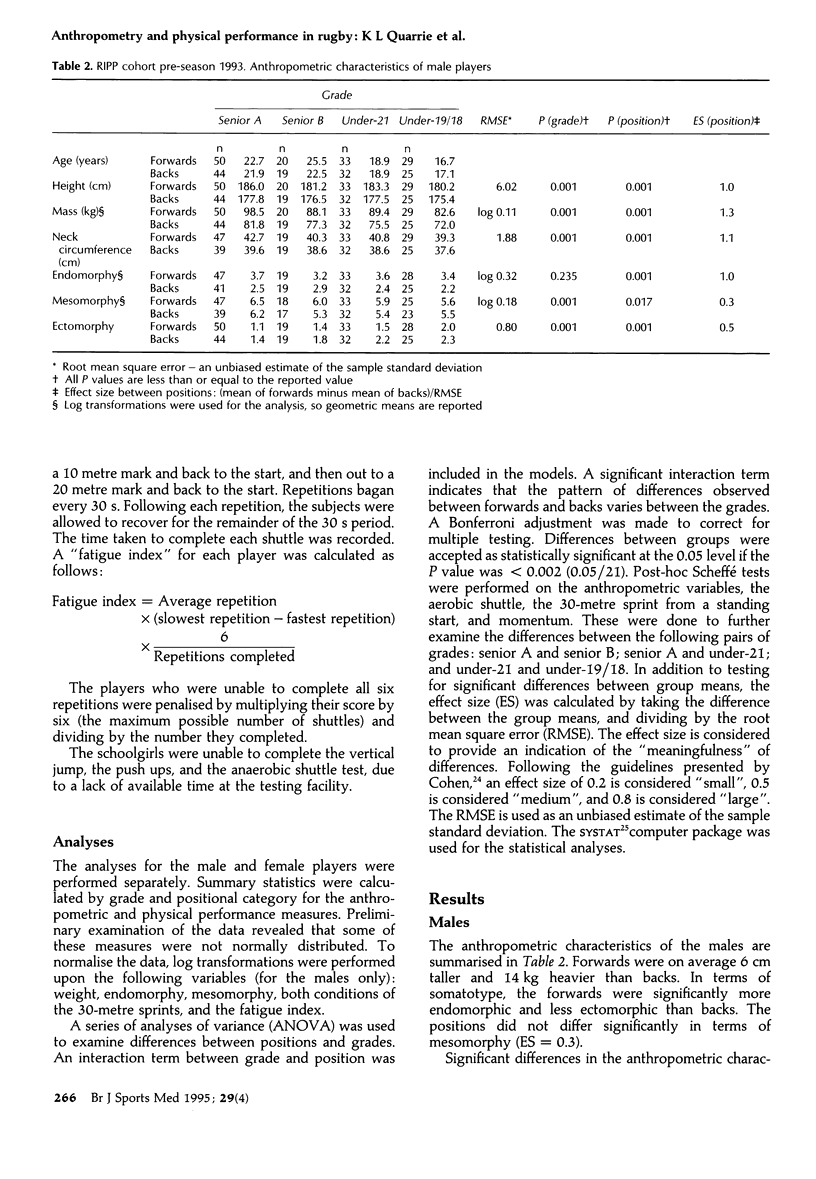
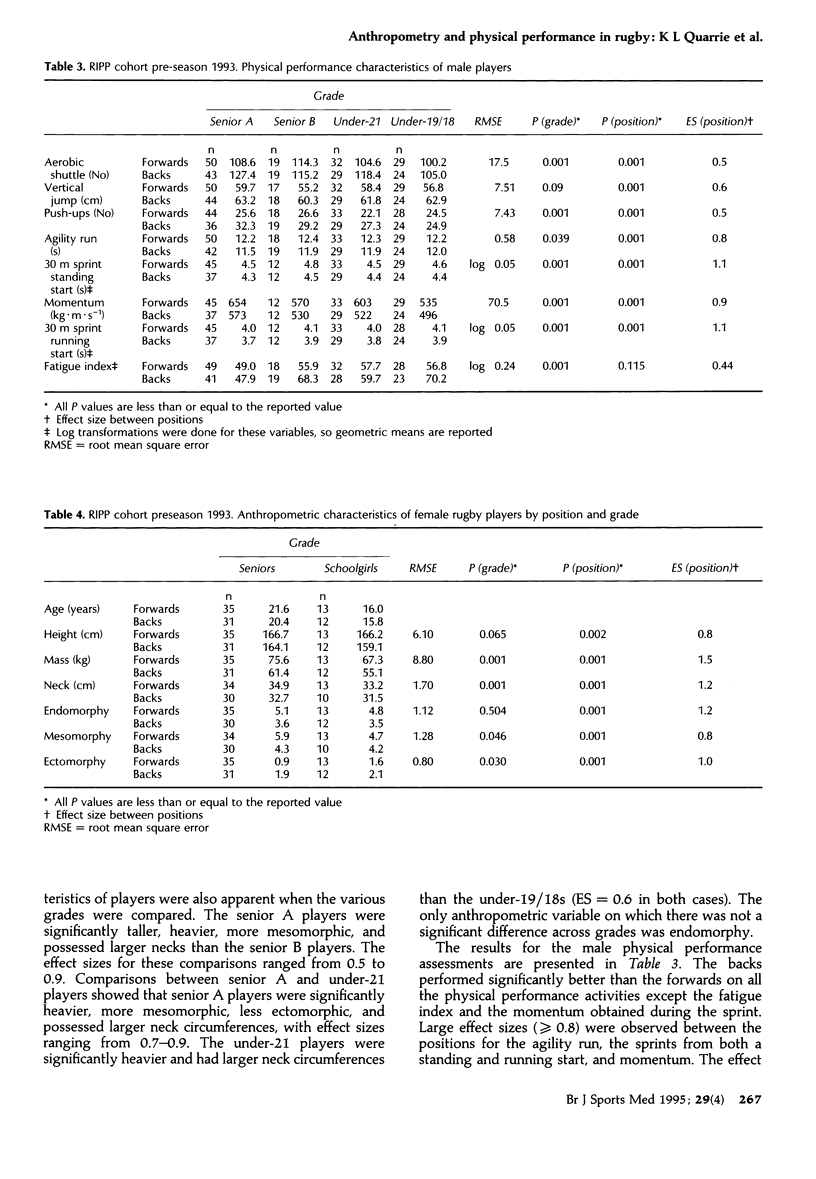


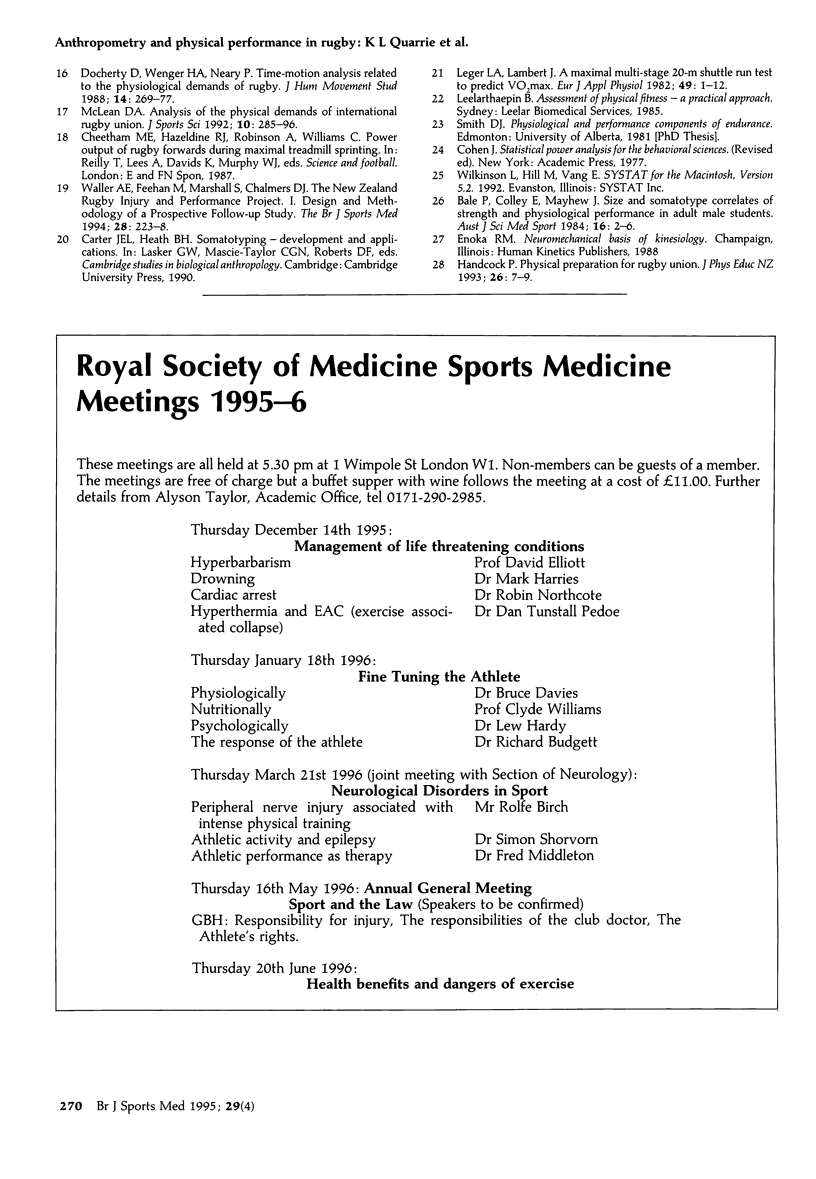
Selected References
These references are in PubMed. This may not be the complete list of references from this article.
- Casagrande G., Viviani F. Somatotype of Italian rugby players. J Sports Med Phys Fitness. 1993 Mar;33(1):65–69. [PubMed] [Google Scholar]
- Jardine M. A., Wiggins T. M., Myburgh K. H., Noakes T. D. Physiological characteristics of rugby players including muscle glycogen content and muscle fibre composition. S Afr Med J. 1988 May 7;73(9):529–532. [PubMed] [Google Scholar]
- Léger L. A., Lambert J. A maximal multistage 20-m shuttle run test to predict VO2 max. Eur J Appl Physiol Occup Physiol. 1982;49(1):1–12. doi: 10.1007/BF00428958. [DOI] [PubMed] [Google Scholar]
- Maud P. J. Physiological and anthropometric parameters that describe a rugby union team. Br J Sports Med. 1983 Mar;17(1):16–23. doi: 10.1136/bjsm.17.1.16. [DOI] [PMC free article] [PubMed] [Google Scholar]
- McLean D. A. Analysis of the physical demands of international rugby union. J Sports Sci. 1992 Jun;10(3):285–296. doi: 10.1080/02640419208729927. [DOI] [PubMed] [Google Scholar]
- Reilly T., Hardiker R. Somatotype and injuries in adult student rugby footfall. J Sports Med Phys Fitness. 1981 Jun;21(2):186–191. [PubMed] [Google Scholar]
- Waller A. E., Feehan M., Marshall S. W., Chalmers D. J. The New Zealand Rugby Injury and Performance Project: I. Design and methodology of a prospective follow-up study. Br J Sports Med. 1994 Dec;28(4):223–228. doi: 10.1136/bjsm.28.4.223. [DOI] [PMC free article] [PubMed] [Google Scholar]
- Watson A. W. Discriminant analysis of the physiques of schoolboy rugby players, hurlers and non-team members. J Sports Sci. 1988 Summer;6(2):131–140. doi: 10.1080/02640418808729803. [DOI] [PubMed] [Google Scholar]
- Withers R. T., Craig N. P., Norton K. I. Somatotypes of South Australian male athletes. Hum Biol. 1986 Jun;58(3):337–356. [PubMed] [Google Scholar]


